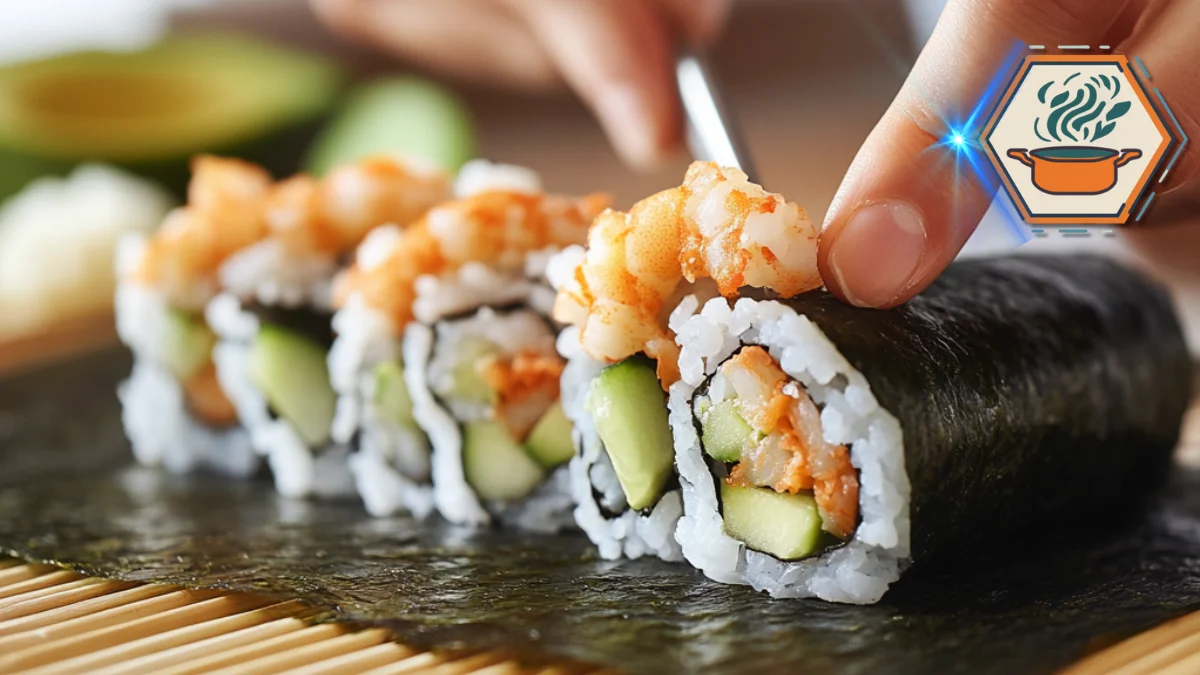Time to read:10 minutes
Table of Contents
What Does a Tempura Roll Have in It?
Tempura rolls are a delightful fusion of Japanese culinary traditions and modern tastes. Combining crispy tempura fillings with the classic components of sushi rolls, they offer a unique texture and flavor profile that has captivated food enthusiasts worldwide. In this section, we’ll explore the origins, traditional ingredients, and modern adaptations of this beloved dish.
What Is a Tempura Roll?
A tempura roll is a type of sushi roll that features tempura-battered and deep-fried ingredients, such as shrimp, vegetables, or seafood, wrapped in sushi rice and seaweed (nori). The combination of warm, crispy tempura fillings and the cool, seasoned rice creates an irresistible contrast in every bite. This dish is often topped with sauces like spicy mayo or eel sauce and garnished with sesame seeds or tempura flakes for added crunch.
Unlike traditional sushi rolls that focus on raw or fresh ingredients, tempura rolls stand out due to the cooking process—tempura frying—which brings a warm, crispy element to the dish. This makes it particularly appealing to those new to sushi or hesitant about eating raw fish.
Pro Tip: When making tempura rolls at home, ensure the tempura batter is light and airy to achieve the signature crispy texture.
The History of Tempura Rolls
Origin of Tempura Cooking
The concept of tempura originates from Portuguese missionaries who arrived in Japan during the 16th century. They introduced the technique of deep frying in batter, which the Japanese adapted and refined into the art of tempura cooking. The term “tempura” itself is derived from the Latin word tempora, referring to fasting periods when meat was replaced with fish and vegetables.
Tempura quickly became a popular method of cooking in Japan, particularly for seafood and vegetables. Over time, this culinary method was incorporated into Japanese cuisine in innovative ways, eventually making its way into sushi culture.
Evolution of Sushi Rolls
Sushi, as a dish, has a history dating back centuries, originating as a preservation technique for fish. However, the modern sushi roll (maki) as we know it emerged in the Edo period. With globalization and the spread of Japanese cuisine, sushi rolls began to evolve, incorporating influences from different cultures. This paved the way for the creation of tempura rolls—a fusion of traditional Japanese cooking and Western preferences for cooked, crispy textures.
Today, tempura rolls are a staple in sushi restaurants worldwide, loved for their versatility and ability to cater to varied tastes.
Traditional vs. Modern Tempura Rolls
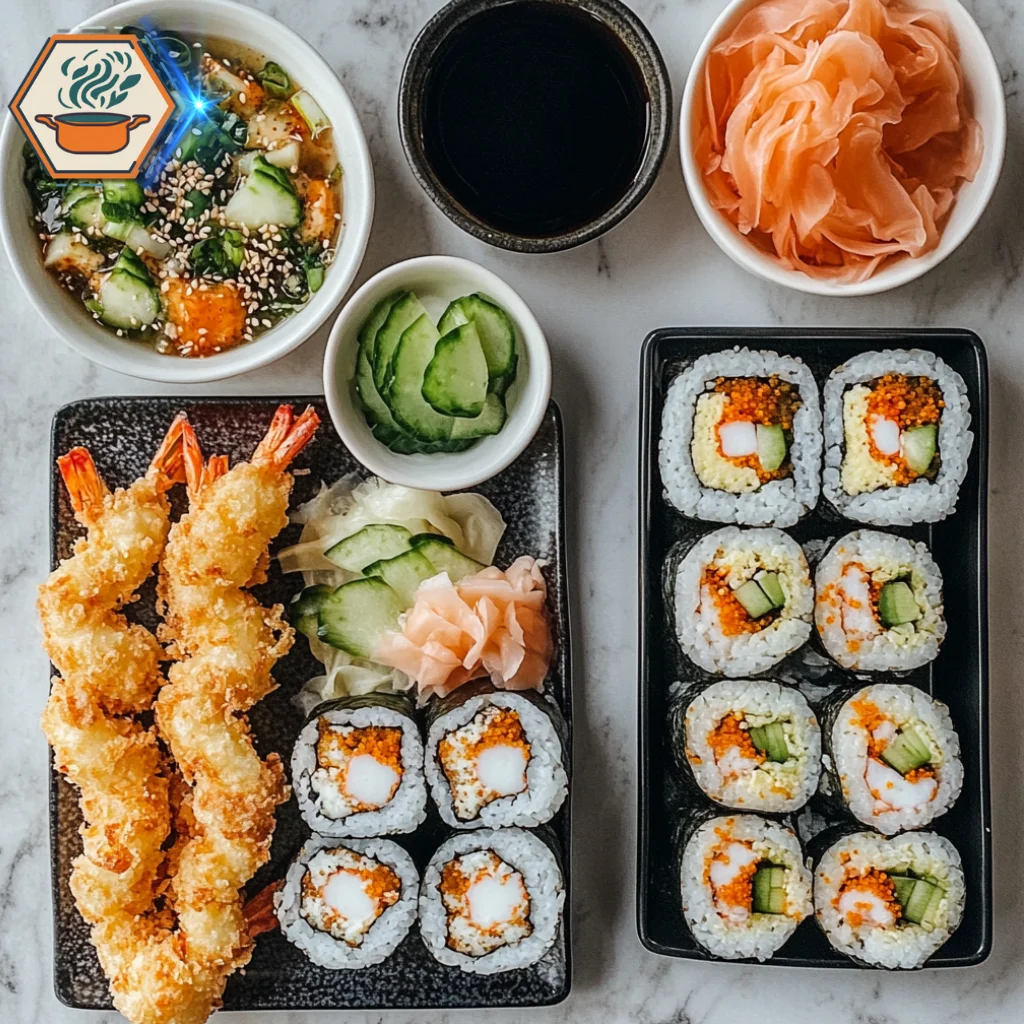
Classic Tempura Roll Components
Traditional tempura rolls typically include:
- Seaweed (Nori): Thin sheets of dried seaweed used to wrap the roll, providing a subtle umami flavor.
- Sushi Rice: Seasoned with rice vinegar, sugar, and salt to balance the flavors.
- Tempura Protein: Common options include shrimp (ebi), crab, or vegetables like sweet potato and zucchini.
- Fresh Fillings: Ingredients like cucumber, avocado, and carrot add crunch and freshness.
These components are tightly rolled using a bamboo mat (makisu), creating a balanced and visually appealing dish.
Modern Variations
In modern cuisine, chefs have taken creative liberties with tempura rolls, experimenting with new ingredients and techniques. Some popular variations include:
- Spicy Tempura Rolls: Featuring spicy mayo or Sriracha sauce for an added kick.
- Dragon Roll: A visually striking roll with tempura shrimp and avocado slices arranged to resemble a dragon.
- Tempura California Roll: A twist on the classic California roll, with tempura-battered crab or avocado.
Modern tempura rolls often incorporate bold flavors, unconventional fillings like cream cheese, and dramatic toppings such as crispy onions or tobiko (flying fish roe).
Core Ingredients in a Tempura Roll
Tempura rolls offer a delightful combination of textures and flavors, featuring crispy tempura, seasoned sushi rice, and fresh fillings encased in seaweed. Understanding the essential ingredients in a tempura roll can help you appreciate its complex simplicity and even inspire you to create your own at home.
Seaweed (Nori): The Foundation of the Roll
Seaweed, or nori, is an indispensable component of a tempura roll. This dried sheet of edible seaweed not only serves as the structural base but also adds a subtle umami flavor that complements the other ingredients. When selecting nori for tempura rolls, quality matters—look for dark, glossy sheets that are free of holes.
Why Seaweed Is Essential:
- Provides structural integrity for the roll.
- Adds a layer of savory umami flavor.
- Balances the rich taste of tempura fillings.
Tip: Lightly toast your nori before use to enhance its aroma and make it easier to roll.
Sushi Rice: The Perfect Complement
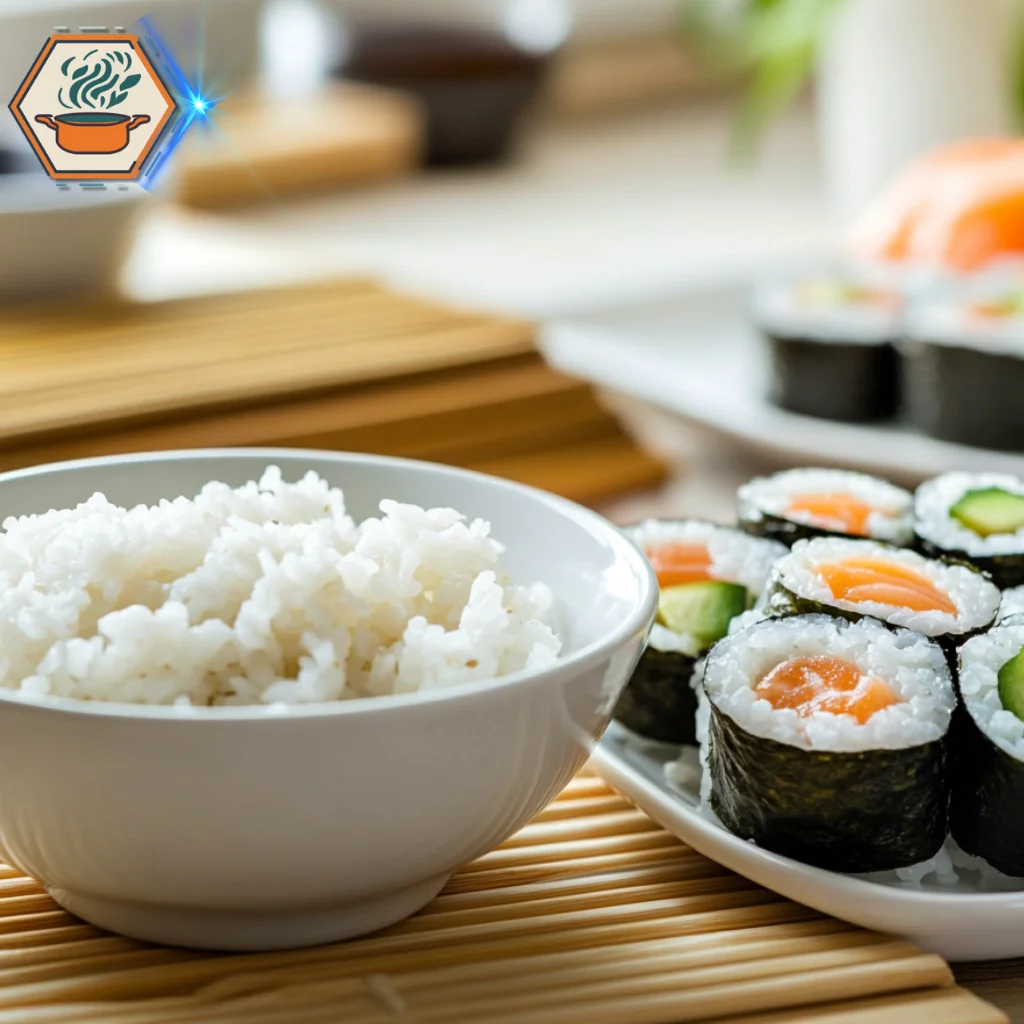
Sushi rice is the heart of any sushi roll, and tempura rolls are no exception. Short-grain Japanese rice is traditionally used for its sticky texture, which helps the roll hold its shape. The rice is flavored with a mixture of rice vinegar, sugar, and salt, achieving a perfect balance of tangy and sweet flavors.
How to Prepare Sushi Rice:
- Rinse the rice multiple times to remove excess starch.
- Prepare the rice using either a rice cooker or the stovetop method.
- While still warm, gently mix the rice with a seasoning blend made of:
- Rice vinegar
- Sugar
- Salt
Pro Tip: Use a wooden spatula and a cutting motion to mix the rice to avoid mashing it.
Sushi rice not only acts as a filler but also plays a vital role in bringing out the flavors of the other components.
Tempura Protein: The Star of the Dish
The crispy tempura filling is what makes this roll unique. Shrimp tempura is the most common choice, but other proteins like crab, fish, or even tofu can be used. The key to a perfect tempura is a light, airy batter that crisps up beautifully when fried.
Ingredients for Tempura Batter:
- All-purpose flour
- Ice-cold water
- Egg yolk (optional for added richness)
How to Achieve the Perfect Batter:
- Mix the batter just before frying; lumps are okay and help create texture.
- Keep the batter cold to ensure it adheres well and fries evenly.
- Fry at 350°F (175°C) until golden and crispy.
Popular tempura options include:
- Shrimp: The classic choice for tempura rolls.
- Sweet Potato: Adds a natural sweetness and creamy texture.
- Zucchini: Light and fresh, a perfect vegetarian option.
Fresh Fillings: Adding Crunch and Flavor
Fresh fillings are essential to balance the richness of the tempura. Common options include:
- Cucumber: Adds crunch and a refreshing taste.
- Avocado: Creamy and rich, perfectly complements the crispy tempura.
- Carrot: Sweet and crunchy, adding color and texture.
These fillings not only enhance the visual appeal of the roll but also contribute to its overall flavor profile.
Making the Tempura Batter: The Secret to Crisp Perfection
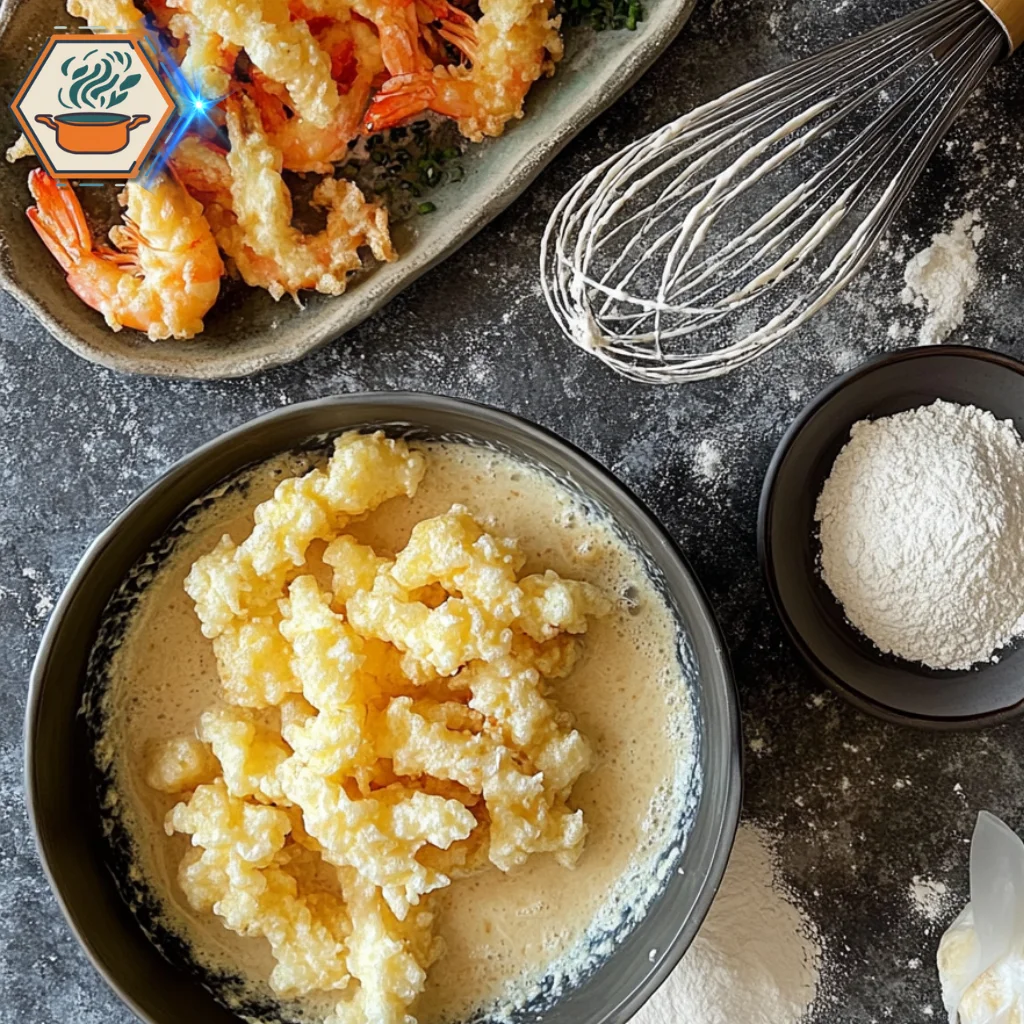
A well-made tempura batter is crucial to achieving that iconic crunch in every bite. Here’s how you can perfect it:
Step-by-Step Recipe for Tempura Batter
- Combine all-purpose flour and a pinch of cornstarch in a bowl.
- Slowly pour in ice-cold water, stirring gently to prevent overmixing.
- (Optional) Add an egg yolk for a richer batter.
Tip: Fry tempura ingredients in small batches to maintain the oil’s temperature.
Use your freshly fried tempura fillings to create a flavorful and textured centerpiece for your roll.
Sauces and Toppings: Finishing Touches
No tempura roll is complete without its accompanying sauces and toppings. These elements bring all the flavors together and elevate the dish to new heights.
Popular Sauces:
- Soy Sauce: Classic and savory.
- Spicy Mayo: Adds a creamy, spicy kick.
- Eel Sauce: Sweet and tangy, perfect for drizzling.
Toppings:
- Sesame Seeds: Provide a subtle nutty flavor and enhance visual appeal.
- Crispy Tempura Flakes: Extra crunch for texture lovers.
- Tobiko: Tiny fish eggs that add a pop of color and a burst of umami.
For a more in-depth look at TOBIKO FISH EGGS, explore our article on Is tobiko actually fish eggs?
How to Make a Tempura Roll at Home
Creating a tempura roll at home can be a rewarding experience. Not only does it allow you to enjoy fresh, personalized sushi, but it also helps you develop an appreciation for the artistry behind Japanese cuisine. In this section, we will guide you through the tools, ingredients, and step-by-step process to craft your own delicious tempura rolls.
Tools and Ingredients You’ll Need
Before you begin, gather the essential tools and ingredients to ensure a smooth sushi-making experience:
Tools:
- Bamboo Mat (Makisu): For rolling the sushi tightly.
- Sharp Knife: To cut the roll cleanly without tearing the nori.
- Rice Paddle: For mixing the sushi rice.
- Deep Fryer or Frying Pan: For frying the tempura.
- Oil Thermometer: To maintain the right frying temperature.
Ingredients:
- Seaweed (Nori): As the outer layer of the roll.
- Sushi Rice: Cooked and seasoned as described in the previous section.
- Tempura Filling: Shrimp, vegetables, or other proteins of your choice.
- Fresh Fillings: Cucumber, avocado, or carrots for added crunch and flavor.
- Tempura Batter: Made with flour, ice-cold water, and optionally egg yolk.
- Sauces and Toppings: Spicy mayo, eel sauce, sesame seeds, or tobiko.
Step-by-Step Guide to Making Tempura Rolls
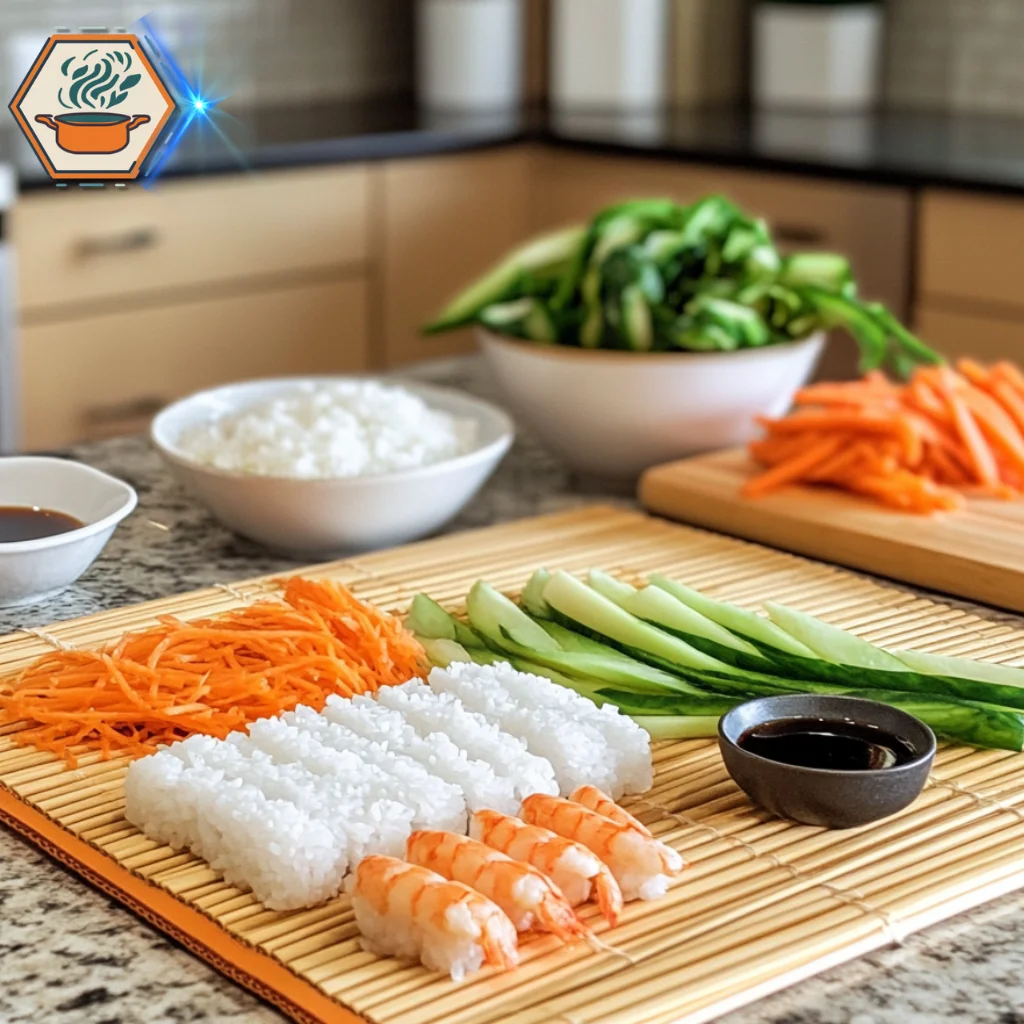
1. Prepare the Sushi Rice
- Rinse the rice under cold water until it runs clear, eliminating excess starch.
- Cook the rice and season it with a blend of rice vinegar, sugar, and salt for flavor
- Let the rice cool completely to room temperature before using it.
2. Make the Tempura Filling
- Mix the tempura batter using all-purpose flour and ice-cold water. Add an egg yolk if desired for extra richness.
- Coat your protein or vegetables in the batter and fry at 350°F (175°C) until golden brown.
- Place the fried tempura on a paper towel to absorb excess oil.
Pro Tip: Fry in small batches to maintain the oil temperature and achieve consistent crispiness.
3. Assemble the Tempura Roll
- Position a sheet of nori on the bamboo mat with the shiny side facing down.
- Evenly spread a thin layer of sushi rice over the nori, leaving approximately one inch of the top edge uncovered.
- Add your tempura filling and fresh fillings horizontally across the center of the rice.
- Use the bamboo mat to roll the sushi tightly, pressing gently to secure the shape.
- Seal the roll by moistening the uncovered edge of the nori.
4. Slice and Serve
- Use a sharp knife, dipping it in water, to evenly slice the roll.
- Arrange the pieces on a plate and drizzle with sauces like spicy mayo or eel sauce.
- Garnish with sesame seeds, crispy tempura flakes, or tobiko.
Health Considerations
While tempura rolls are undeniably delicious, they can be high in calories due to the fried ingredients. Here’s how you can make them a bit healthier:
- Use Whole-Grain Rice: For added fiber and nutrients.
- Air Fry the Tempura: Reduce oil consumption by using an air fryer.
- Include More Vegetables: Balance the dish with fresh, crunchy vegetables.
Serving Tempura Rolls
Presentation is key when serving tempura rolls. Here are a few tips to elevate your dining experience:
- Plate Design: Arrange the rolls neatly on a flat plate and garnish with sauces, sesame seeds, and fresh herbs.
- Pairing: Serve with sides like miso soup, pickled ginger, or a light salad.
- Beverages: Complement your rolls with sake, green tea, or a refreshing sparkling water.
External Resource: Learn more about pairing sushi with beverages in this guide to Japanese drinks.
FAQs About Tempura Rolls
1. Can I use alternative proteins for tempura rolls?
Yes! While shrimp is the most common choice, you can experiment with other proteins like chicken, tofu, or fish.
2. How do I keep my tempura crispy?
Serve the rolls immediately after frying. To maintain crispiness, avoid overloading the batter and frying in small batches.
3. Are tempura rolls gluten-free?
Traditional tempura batter contains wheat flour, but you can make a gluten-free version using rice flour or gluten-free all-purpose flour.

